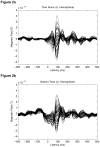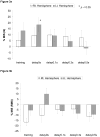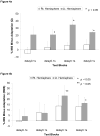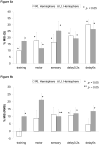Motor-induced suppression of the auditory cortex
- PMID: 18593265
- PMCID: PMC2944400
- DOI: 10.1162/jocn.2009.21055
Motor-induced suppression of the auditory cortex
Abstract
Sensory responses to stimuli that are triggered by a self-initiated motor act are suppressed when compared with the response to the same stimuli triggered externally, a phenomenon referred to as motor-induced suppression (MIS) of sensory cortical feedback. Studies in the somatosensory system suggest that such suppression might be sensitive to delays between the motor act and the stimulus onset, and a recent study in the auditory system suggests that such MIS develops rapidly. In three MEG experiments, we characterize the properties of MIS by examining the M100 response from the auditory cortex to a simple tone triggered by a button press. In Experiment 1, we found that MIS develops for zero delays but does not generalize to nonzero delays. In Experiment 2, we found that MIS developed for 100-msec delays within 300 trials and occurs in excess of auditory habituation. In Experiment 3, we found that unlike MIS for zero delays, MIS for nonzero delays does not exhibit sensitivity to sensory, delay, or motor-command changes. These results are discussed in relation to suppression to self-produced speech and a general model of sensory motor processing and control.
Figures










References
-
- Begleiter H, Porjesz B, Yerre C, Kissin B. Evoked potential correlates of expected stimulus intensity. Science. 1973;179:814–816. - PubMed
-
- Blakemore SJ, Frith CD, Wolpert DM. Spatio-temporal prediction modulates the perception of self-produced stimuli. J Cogn Neurosci. 1999;11:551–559. - PubMed
-
- Blakemore SJ, Rees G, Frith CD. How do we predict the consequences of our actions? a functional imaging study. Neuropsychologia. 1998;36(6):521–529. - PubMed
-
- Blakemore SJ, Wolpert DM, Frith CD. Central cancellation of self-produced tickle sensation. Nature Neuroscience. 1998;1:635–640. - PubMed
-
- Blakemore SJ, Wolpert DM, Frith CD. Why can’t you tickle yourself? Neuroreport. 2000;11:R11–16. - PubMed
Publication types
MeSH terms
Grants and funding
LinkOut - more resources
Full Text Sources

